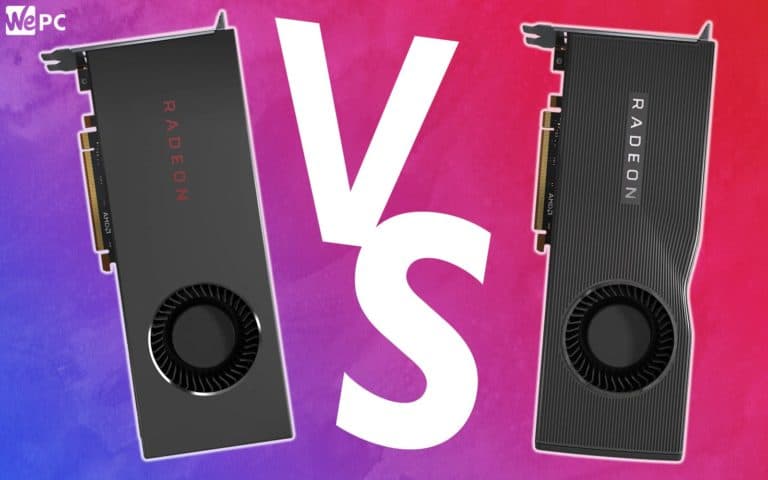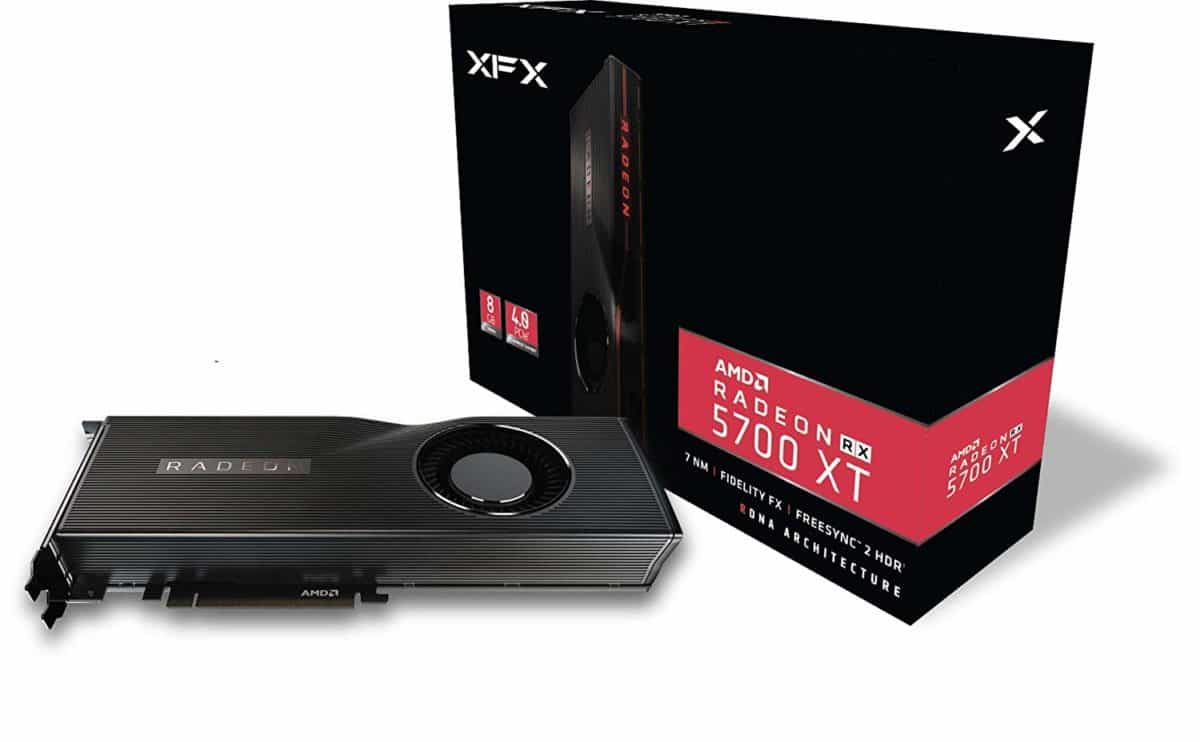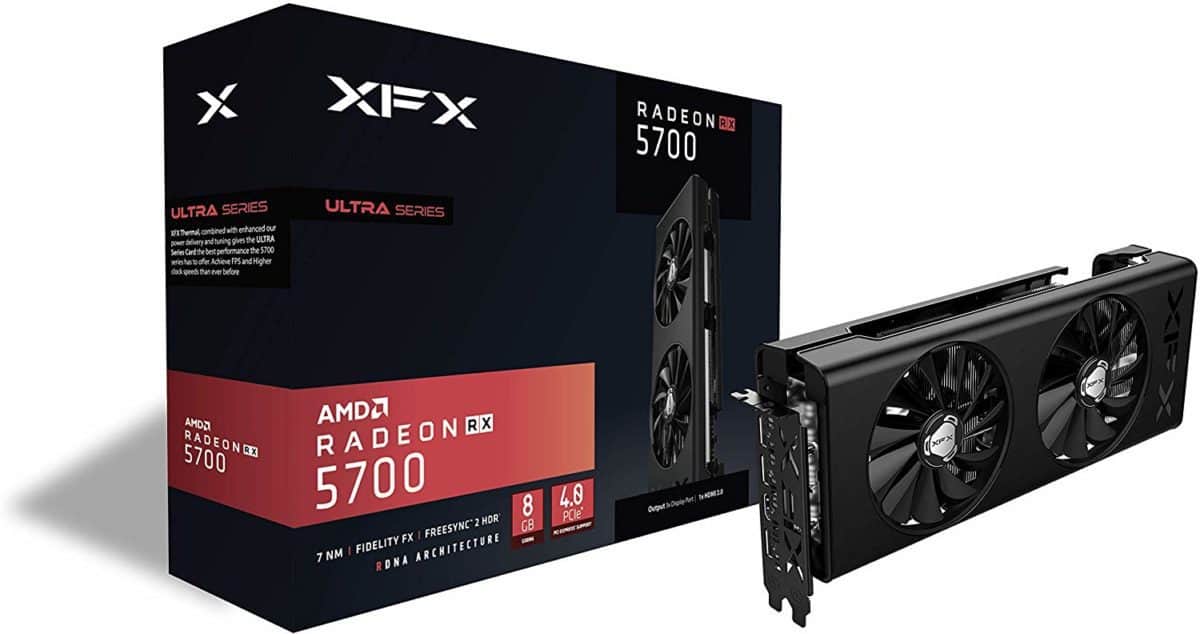
Architecture
To begin, we’re going to be taking a look at the architecture of each card. Made with AMD’s bespoke RDNA architecture, both cards have been engineered to deliver a 1.25 performance per clock, as opposed to older-generation 14nm processors.
Unlike older architecture, RDNA uses redesigned compute units, which are able to help give both overall performance and clock speed a boost.
RDNA also uses an entirely new cache structure, which is able to help increase efficiency by up to 25 percent and improve wattage by around 50 percent when compared to older-generation cards.
However, though each card features this innovative architecture, there are a few differences between the two that we feel are worth noting. One of the most significant changes in the clock speed.
As you might expect, the game clock of the upgraded 5700 XT (or the speed you can expect to achieve during a workload within the card’s capabilities) is slightly higher than the 5700’s base clock of 1605MHz and can be pushed to 1755MHz.
In comparison to the 5700’s game clock of 1625 MHz, it’s easy to see that you’re going to get faster performance with the 5700 XT. The base clock is also greater on the 5700 XT, though you could technically close the gap by overclocking the 5700, which has a base clock of 1465MHz. However, to do so you would need to purchase a cooling system, which would require additional purchase.
Resolution
The next factor to take into consideration is the resolution, which refers to how clear the graphics will appear on your screen.
The 5700 offers a pixel rate of 110.4 GPixel/s and a texture rate of 248.4 GTexel/s, which will be able to handle full HD gaming smoothly.
However, the 5700 XT is slightly more powerful than the 5700, with a pixel rate of 121.9 GPixel s and a texture rate of 304.8 GTexel/s.
Ray Tracing
Unfortunately, neither the 5700 nor the RX 5700 offer ray-tracing enabling as they have been made with AMD’s RDNA architecture.
This makes them fantastic choices for HD gaming, however, if ray-tracing effects are something you’d like, you might want to consider an AMD card that features RDNA2.
Cooling
If you’re familiar with Nvidia, then you’ll already be aware of the innovative changes they have been making in the gaming world regarding cooling systems. While Nvidia has begun introducing new ways to prevent their cards from overheating, such as by using dual-fans within their RTX cards, AMD has been slower to introduce changes, which is why both the 5700 and 5700 XT each feature their tried and true blower-style fan design
For this reason, we can’t ignore the fact that both the RX 5700 and RX 5700 XT tend to run a lot hotter and louder than their competition. The blower-style fan does offer benefits, particularly being that smaller cases can have a cooling system, however, for the most part, it goes without saying that multiple fan systems work the most efficiently.
In addition to this, on the newer 5700 XT, there is a strategically placed dent on the exterior, which AMD has included to help bolster the airflow, though there isn’t much to say as to whether it makes an obvious improvement or not.
As a side note, it is worth being aware that both the 5700 and 5700 KT feature loud blower fans, which may be an issue for those that want a quieter performance.
VRAM
Finally, we’re going to be taking a look at the VRAM specification. As part of AMD’s new RDNA architecture cards, both the 5700 and 5700 XT have identical configurations here.
Both consist of GDDR6 memory with an 8GB size, as well as a powerful bandwidth of 448.0 GB/s. However, the 5700 XT has a slightly more powerful over render configuration, with 2560 shading units compared to the 5700’s 2304, and 40 compute units as opposed to the 5700’s 36.
The 5700 XT is also the most stylish out of the two, with a matte-grey colorway design and an aluminum exterior. It also features 2,560 stream processors, 64 ROPS, and a backlit logo. Nevertheless, the 5700 rivals the 5700 XT in memory, frame buffer size, which means that it is still very well suited to handling high-resolution workloads.
Final Word
So, which one should you pick? Generally speaking, the 5700 XT is the most powerful out of the two, with around a10% faster performance and wattage of 225 compared to the 5700’s 180W.
However, the 5700 XT does tend to overheat on its default settings, while the 5700 is able to deliver around 100+ Fps at default, which may mean that you would need to purchase an additional cooling system if you went with the newer card. Nevertheless, the 5700 XT is the more ‘future-proof’ out of the two and is more compatible with new-generation games.





